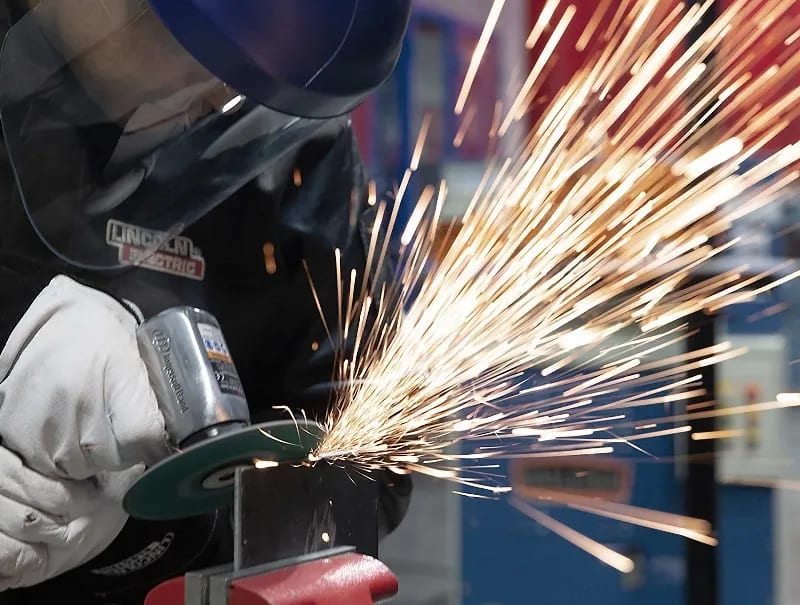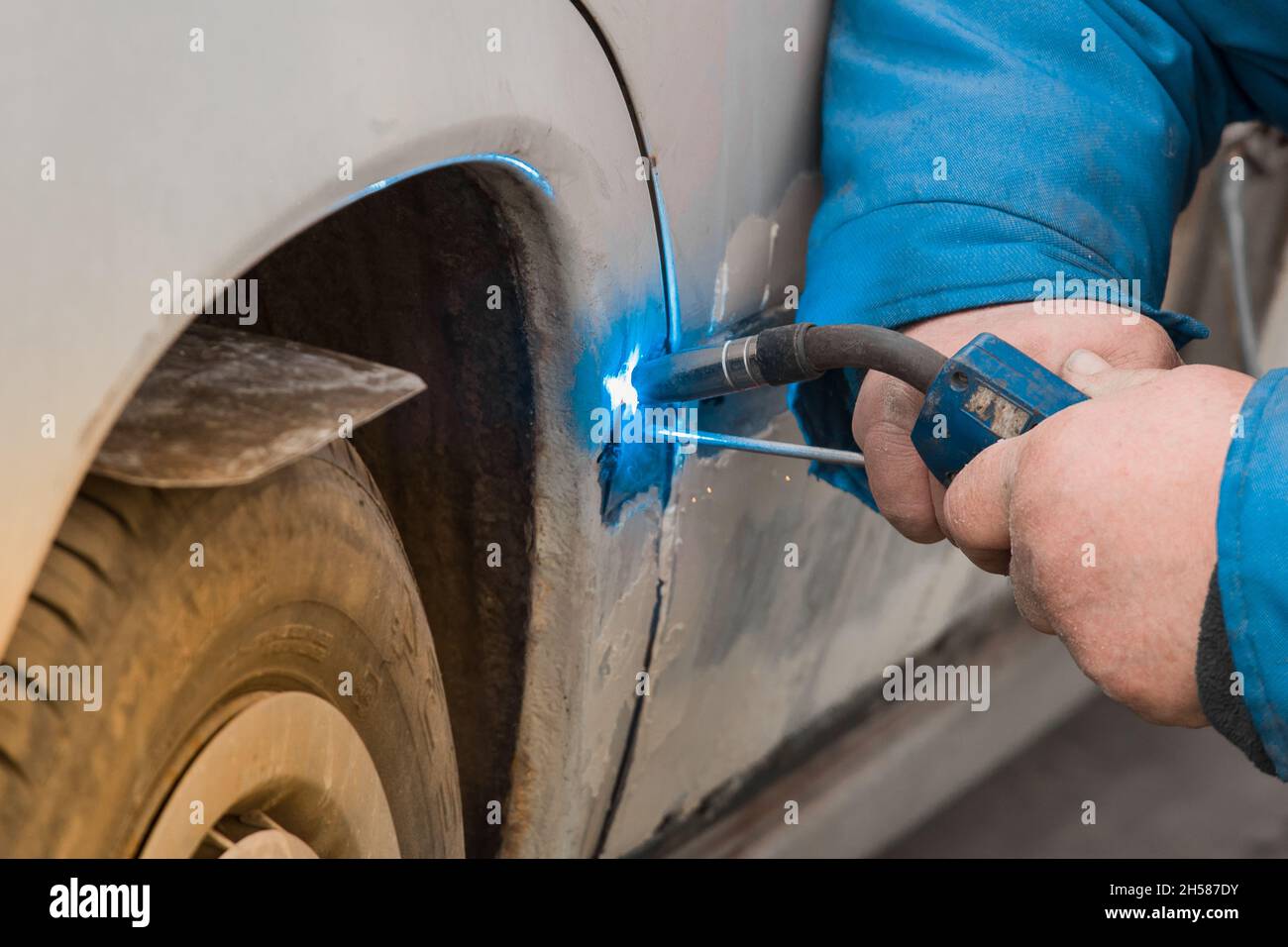Usual Welding Repair Issues and Just How to Address Them Successfully
Welding repair services typically come across a series of issues that can endanger the integrity of the end product. Common problems consist of poor infiltration, porosity, and misalignment, among others. Each flaw presents distinct obstacles that call for particular strategies for resolution. Understanding these problems is vital for welders aiming to enhance their skills and outcomes. This discussion will certainly explore these typical welding fixing problems and efficient techniques to address them.
Inadequate Penetration
Poor penetration happens when the weld metal falls short to fully fuse with the base material, leading to weak joints and possible architectural failings. This concern often originates from not enough warm input, inaccurate electrode angle, or incorrect welding speed. Welders might run into poor penetration as a result of a mistake of the essential specifications for a certain material density or kind. In addition, contamination on the base product's surface area can prevent reliable bonding, exacerbating the issue. To attend to inadequate infiltration, welders must ensure ideal setups on their equipment and preserve a clean work surface. Regular inspection of welds is recommended to recognize any shortages early, enabling prompt improvements and the prevention of endangered structural honesty in welded settings up.
Porosity
Porosity is a typical issue in welded joints that shows up as small gas bubbles trapped within the weld steel. This problem can endanger the stability of the weld, leading to lowered strength and possible failing under stress. Montana Mobile Welding and Repair Welding. Porosity normally develops from contamination, dampness, or inappropriate welding strategies, which enable gases to get away into the molten weld pool. To attend to porosity, welders must ensure correct surface area prep work, maintain a clean working atmosphere, and utilize appropriate welding parameters. Additionally, selecting the ideal filler product and shielding gas can mitigate gas entrapment. Regular evaluation and testing of welds can help identify porosity early, guaranteeing prompt restorative actions are taken, consequently maintaining the quality and reliability of the bonded structure
Imbalance
Imbalance in welding can occur from different factors, including incorrect arrangement and thermal growth. Understanding the source is vital for effective resolution. Several modification methods are offered to realign components and ensure architectural stability.
Reasons for Misalignment
Welding imbalance usually stems from a selection of underlying concerns that can compromise structural integrity. One primary cause is inappropriate fit-up of components prior to welding, which can bring about voids and uneven surfaces. Variations in thermal growth throughout the welding process can additionally result in distortion, specifically if the products being joined have different coefficients of expansion. Additionally, inadequate fixturing and securing might fail to hold parts firmly in location, bring about motion during welding. Inadequately kept equipment, including welding devices and tools, might introduce inconsistencies in the weld bead, further adding to misalignment. Ultimately, driver mistake, stemming from inadequate training or experience, can also play a considerable function in producing misaligned welds.
Adjustment Techniques Offered
Attending to imbalance properly needs a combination of restorative techniques tailored to the specific concerns handy. One usual technique is the use of jigs or components to hold parts in the appropriate placement during welding, guaranteeing consistent placement. In addition, pre-heating the products can help in reducing distortion and improve fit-up. For considerable misalignment, mechanical realignment strategies, such as utilizing hydraulic jacks or clamps, can be used to fix the placement prior to welding. Post-weld warm therapy might likewise be needed to eliminate tensions triggered by imbalance. Cautious assessment and modification throughout the arrangement phase can protect against imbalance issues from coming to be substantial troubles, advertising a smoother welding process and boosting general structural stability.
Distortion
Distortion is an usual obstacle in welding that can emerge from numerous elements, consisting of uneven home heating and air conditioning. Comprehending the reasons for distortion is important for implementing reliable avoidance methods. Resolving this concern not just boosts architectural stability yet also improves the overall quality of the weld.
Sources of Distortion
When subjected to the intense heat of welding, materials often undertake modifications that can lead to distortion. This sensation primarily occurs from thermal development and contraction during the welding process. As the weld location warms up, the product expands; upon air conditioning, it gets, which can create internal anxieties. Additionally, irregular heating across a workpiece can intensify find more info these stress and anxieties, leading to bending or bending. The kind of product also plays a substantial role; steels with varying thermal conductivity and coefficients of expansion might react differently, leading to unforeseeable distortions. Moreover, bad joint design and insufficient fixturing can add to misalignment during welding, boosting the probability of distortion. Comprehending these causes is vital for reliable welding fixing and prevention methods.
Avoidance Techniques
Reliable avoidance techniques for distortion during welding concentrate on managing heat input and ensuring appropriate joint design. Maintaining a consistent warmth input assists to reduce thermal expansion and contraction, which can bring about distortion. Utilizing methods such as pre-heating the workpiece can additionally lower the temperature level gradient, promoting consistent heating. Furthermore, choosing ideal joint styles, such as T-joints or lap joints, can improve stability and minimize stress and anxiety focus. Carrying out appropriate fixturing to safeguard the workpieces in location even more aids in keeping placement during the welding process. Staggered welding sequences can distribute heat a lot more evenly, stopping localized distortion. By applying these strategies, welders can considerably decrease the probability of distortion and enhance the general top quality of their welds.
Breaking
Breaking is a common issue run into in welding repair work, frequently resulting from various aspects such as improper cooling prices, product choice, or inadequate joint prep work. The occurrence of cracks can substantially endanger the stability of the weld, resulting in possible failures during procedure. To address this concern, welders must initially evaluate the origin, making certain that materials work and appropriately picked for the details application. In addition, regulating the air conditioning rate throughout the welding procedure is crucial; rapid cooling can induce tension and cause breaking. Proper joint style and prep work additionally add to reducing the danger. Carrying out these strategies can boost weld top quality and durability, eventually reducing the chance of breaking in completed weldments.

Insufficient Fusion
A significant problem in welding repair work is incomplete combination, see this site which takes place when the weld steel does not adequately bond with the base material or previous weld passes - Montana Mobile Welding and Repair Welding. This problem can lead to weaknesses in the joint, possibly jeopardizing the honesty of the bonded structure. Factors adding to incomplete fusion consist of not enough warm input, inappropriate welding technique, and contamination of the surfaces being joined. To resolve this problem effectively, welders should ensure correct pre-weld cleaning and surface area preparation, along with readjust their welding criteria to attain appropriate penetration and fusion. Regular assessment throughout the welding procedure can additionally aid determine insufficient blend early, enabling timely restorative measures to enhance the overall top quality of the weld
Overheating
While welding fixings can enhance architectural integrity, overheating presents a significant difficulty that can bring about material deterioration. Too much warm during welding can modify the mechanical properties of metals, causing minimized toughness, boosted brittleness, and bending. This that site phenomenon is especially critical in high-stress applications where architectural integrity is vital. Determining overheating can involve aesthetic assessments for discoloration or distortion, as well as keeping track of temperature level throughout the welding procedure. To reduce the dangers connected with getting too hot, welders should employ suitable strategies, such as controlling heat input, changing travel rate, and utilizing ideal filler products. Additionally, executing pre- and post-weld warm therapies can assist restore material properties and improve the general quality of the repair service, guaranteeing lasting efficiency and safety and security.
Frequently Asked Questions
What Are the Usual Indications of a Welding Problem?

Exactly How Can I Examine My Welds for Top quality?
To evaluate welds for quality, one can utilize aesthetic assessments, ultrasonic screening, and radiographic approaches. Each strategy ensures architectural stability, recognizes defects, and validates adherence to specified criteria, inevitably improving the reliability of the welded joints.
What Security Safety Measures Should I Take While Welding?
When welding, one should focus on security by wearing proper individual safety devices, ensuring correct air flow, protecting flammable materials away, maintaining a tidy work area, and being aware of environments to stop crashes and injuries.
Can I Repair a Weld Without Renovating the Entire Joint?
Repairing a weld without renovating the whole joint is possible, depending on the damage (Belgrade). Methods such as grinding, including filler product, or making use of a welding process can properly address particular flaws while maintaining the surrounding framework
What Tools Are Important for Reliable Welding Services?
Necessary devices for efficient welding repairs consist of a welding machine, cable brush, mill, safety gear, clamps, and filler products. Each tool plays a vital duty in ensuring high quality and security during the repair procedure. Porosity normally emerges from contamination, moisture, or improper welding techniques, which enable gases to run away into the liquified weld pool. Badly maintained tools, consisting of welding machines and tools, may present disparities in the weld grain, additional adding to imbalance. When subjected to the intense warm of welding, materials typically go through modifications that can lead to distortion. Cracking is a common issue experienced in welding repairs, often resulting from numerous elements such as inappropriate cooling prices, product option, or inadequate joint prep work. A substantial problem in welding repairs is insufficient combination, which occurs when the weld steel does not effectively bond with the base material or previous weld passes.